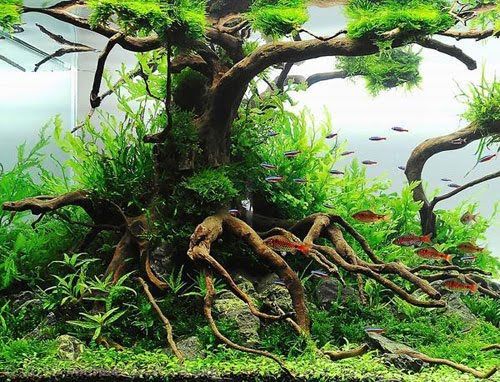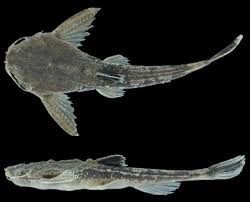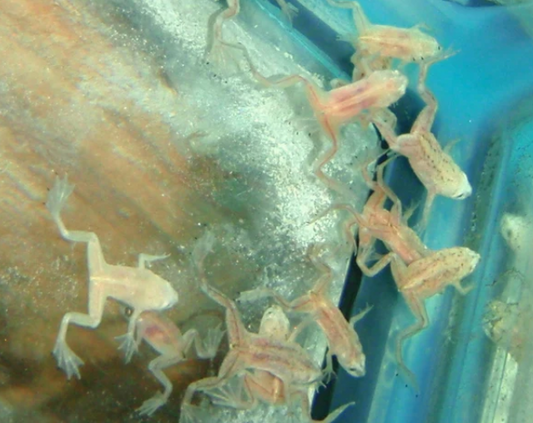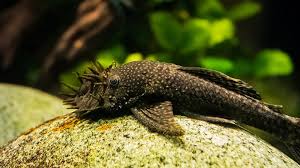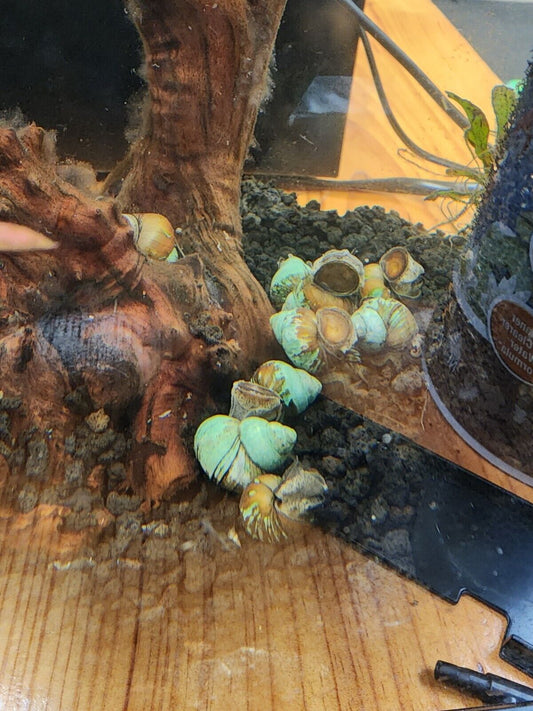We believe in a natural look for every tank. From under water to on land and everything in-between.
Best Sellers
Learn more
Aquarium Store Essentials
Welcome to the wonderful world of aquariums! Whether you are a seasoned aquarist or just getting started, our aquarium store has everything you need to create a beautiful and thriving underwater ecosystem.
Aquariums are a great way to bring a piece of nature into your home or office. Not only are they beautiful and relaxing to watch, but they also provide numerous health benefits. Studies have shown that watching fish can reduce stress, lower blood pressure, and improve overall mood.
When it comes to setting up an aquarium, there are a few things you need to consider. First and foremost, you need to choose the right size tank for your space and the type of fish you want to keep. A larger tank will provide a more stable environment for your fish and allow for a greater variety of species.
Next, you will need to choose the right filtration system. A good filter will help maintain water quality and keep your fish healthy. There are many types of filters available, including power filters, canister filters, and sponge filters. Our experienced staff can help you choose the right filter for your specific needs.
Once you have your tank and filtration system in place, it's time to choose your fish and other aquatic creatures. There are countless species to choose from, each with its own unique personality and requirements. From colorful tropical fish to exotic corals and invertebrates, our aquarium store has a wide variety of options to choose from.
In addition to fish, there are many other items you may want to consider for your aquarium, such as live plants, rocks, and decorations. These can help create a more natural environment for your fish and add to the aesthetic appeal of your tank.
Finally, it's important to maintain your aquarium properly to ensure the health and well-being of your fish. This includes regular water changes, testing water parameters, and cleaning your tank and equipment.
At our aquarium store, we pride ourselves on providing high-quality products and expert advice to help you create the perfect aquarium. Whether you're a beginner or an experienced aquarist, we have everything you need to make your aquarium dreams a reality. Stop by today and let us help you get started on your aquatic adventure!
Aquarium Plants Benefits
Aquarium plants are an essential component of any aquatic environment, providing numerous benefits to both the inhabitants of the tank and the overall health of the ecosystem. These plants not only enhance the aesthetic beauty of the aquarium but also contribute to the biological filtration, oxygenation, and nutrient cycling of the water.
Choosing the right plants for your aquarium can be overwhelming, but with a little research and guidance, you can create a beautiful and healthy aquatic environment for your fish and other aquatic creatures. In this blog post, we will explore the various types of aquarium plants, their benefits, and how to care for them.
Types of Aquarium Plants
There are three main types of aquarium plants: foreground, mid-ground, and background. Foreground plants are smaller plants that are typically placed in the front of the aquarium, mid-ground plants are medium-sized plants that are placed in the middle of the aquarium, and background plants are taller plants that are placed in the back of the aquarium.
Some common foreground plants include dwarf hairgrass, java moss, and anubias nana petite. Mid-ground plants include rotala indica, cryptocoryne wendtii, and java fern, while background plants include Amazon sword, dwarf sagittaria, and ludwigia repens.
Benefits of Aquarium Plants
Aquarium plants provide numerous benefits to the aquatic environment. They are natural filters, absorbing excess nutrients such as nitrate and phosphate, which can cause algae blooms and harm fish and other aquatic creatures. Plants also produce oxygen through photosynthesis, which is essential for the health and well-being of fish and other aquatic creatures.
In addition to their filtration and oxygenation benefits, aquarium plants also provide a natural habitat and hiding place for fish and other aquatic creatures. Plants create a natural environment that mimics the natural habitat of fish, which can reduce stress and increase the overall health and longevity of the fish.
Caring for Aquarium Plants
Caring for aquarium plants is relatively simple and requires a few basic steps. First, it is important to choose the right plants for your aquarium based on the size and type of tank, lighting conditions, and water parameters. Once you have chosen your plants, it is important to provide them with the right amount of light, nutrients, and carbon dioxide.
Lighting is essential for the growth and health of aquarium plants. Most aquarium plants require 8-12 hours of light per day, depending on the species. The type of lighting you choose will depend on the type of plants you have and the size of your aquarium.
Nutrients are also essential for the growth and health of aquarium plants. Nitrogen, phosphorus, and potassium are the most important nutrients for plants, and they can be provided through aquarium fertilizers or by adding organic matter to the substrate.
Carbon dioxide (CO2) is another important element for plant growth. Aquarium plants absorb CO2 through their leaves, which is essential for photosynthesis. Adding CO2 to the water can help plants grow faster and healthier.
Conclusion
Aquarium plants are a beautiful and essential component of any aquatic environment. They provide numerous benefits to the health and well-being of fish and other aquatic creatures, including natural filtration, oxygenation, and nutrient cycling. By choosing the right plants and providing them with the right amount of light, nutrients, and CO2, you can create a healthy and beautiful aquatic environment for your fish and other aquatic creatures.
Aquarium wood
Aquarium wood, also known as driftwood, is a popular addition to aquariums that provides both an aesthetic and functional purpose. It can enhance the natural look of your tank and provide a natural habitat for your fish and other aquatic creatures. In this blog post, we will explore the various types of aquarium wood, their benefits, and how to care for them.
Types of Aquarium Wood
There are several types of aquarium wood that you can choose from, each with its own unique features and benefits. Some of the most common types of aquarium wood include:
• Malaysian driftwood: This is a popular type of aquarium wood that is known for its intricate and twisted shapes. It is often used as a centerpiece in aquariums due to its unique appearance.
• Mopani wood: This type of wood is known for its durability and hardness, making it an ideal choice for aquariums. It is also resistant to decay and rot, which makes it a long-lasting addition to your tank.
• Spider wood: This type of wood has thin, winding branches that can create a unique and intricate look in your aquarium. It also has a porous surface, which allows for beneficial bacteria to grow and help with biological filtration.
Benefits of Aquarium Wood
Aquarium wood provides several benefits to your tank and its inhabitants. Some of the most significant benefits include:
• Natural Habitat: Aquarium wood provides a natural habitat for your fish and other aquatic creatures. It provides hiding places and shelter, which can reduce stress and improve the overall health of your fish.
• Aesthetic Appeal: Aquarium wood can enhance the natural look of your tank and create a beautiful, natural-looking environment for your fish.
• Water Quality: Wood can help to stabilize the pH level of the water in your aquarium, which is essential for the health of your fish and other aquatic creatures. It can also release tannins into the water, which can create a natural and healthy environment for your fish.
Caring for Aquarium Wood
Caring for aquarium wood is relatively simple and requires a few basic steps. First, it is important to choose the right type of wood for your aquarium. Make sure that the wood you choose is safe for your fish and does not release harmful toxins into the water.
Once you have chosen your wood, it is important to prepare it before adding it to your aquarium. Soak the wood in water for several days or boil it to remove any impurities and reduce the risk of mold or bacteria growth.
Once you have prepared your wood, you can add it to your aquarium. Place it in a way that looks natural and provides hiding places and shelter for your fish. You can also attach plants to the wood to create a more natural-looking environment.
Conclusion
Aquarium wood is a beautiful and functional addition to any aquarium. It provides a natural habitat for your fish and other aquatic creatures, enhances the aesthetic appeal of your tank, and can improve the water quality in your aquarium. By choosing the right type of wood and preparing it properly, you can create a healthy and beautiful aquatic environment for your fish and other aquatic creatures.
Aquarium Rocks
Aquarium rocks are a popular addition to aquariums that can provide both functional and aesthetic benefits. Rocks can create a natural-looking environment for your fish and other aquatic creatures, and they can also provide hiding places and shelter. In this blog post, we will explore the various types of aquarium rocks, their benefits, and how to care for them.
Types of Aquarium Rocks
There are several types of aquarium rocks that you can choose from, each with its own unique features and benefits. Some of the most common types of aquarium rocks include:
• Lava rock: Lava rock is a porous and lightweight rock that can provide a natural-looking environment for your fish. It is also beneficial for biological filtration as it provides a surface area for beneficial bacteria to grow.
• Seiryu stone: Seiryu stone is a popular choice for aquariums due to its unique and intricate appearance. It has a blue-gray color and features intricate veins that create a natural and unique look.
• Slate rock: Slate rock is a flat and smooth rock that can provide hiding places and shelter for your fish. It can also create a natural-looking environment when arranged in a way that resembles a riverbed.
Benefits of Aquarium Rocks
Aquarium rocks provide several benefits to your tank and its inhabitants. Some of the most significant benefits include:
• Natural Habitat: Aquarium rocks provide a natural-looking environment for your fish and other aquatic creatures. They can create hiding places and shelter, which can reduce stress and improve the overall health of your fish.
• Aesthetic Appeal: Aquarium rocks can enhance the natural look of your tank and create a beautiful, natural-looking environment for your fish.
• Water Quality: Rocks can help to stabilize the pH level of the water in your aquarium, which is essential for the health of your fish and other aquatic creatures.
Caring for Aquarium Rocks
Caring for aquarium rocks is relatively simple and requires a few basic steps. First, it is important to choose the right type of rocks for your aquarium. Make sure that the rocks you choose are safe for your fish and do not release harmful toxins into the water.
Once you have chosen your rocks, it is important to prepare them before adding them to your aquarium. Rinse the rocks thoroughly to remove any dirt or debris, and then soak them in water for several days to remove any impurities.
Once you have prepared your rocks, you can add them to your aquarium. Place them in a way that looks natural and provides hiding places and shelter for your fish. You can also attach plants to the rocks to create a more natural-looking environment.
Conclusion
Aquarium rocks are a beautiful and functional addition to any aquarium. They provide a natural-looking environment for your fish and other aquatic creatures, enhance the aesthetic appeal of your tank, and can improve the water quality in your aquarium. By choosing the right type of rocks and preparing them properly, you can create a healthy and beautiful aquatic environment for your fish and other aquatic creatures.
